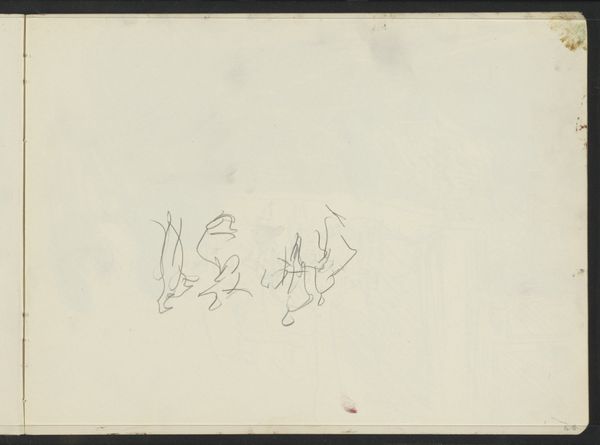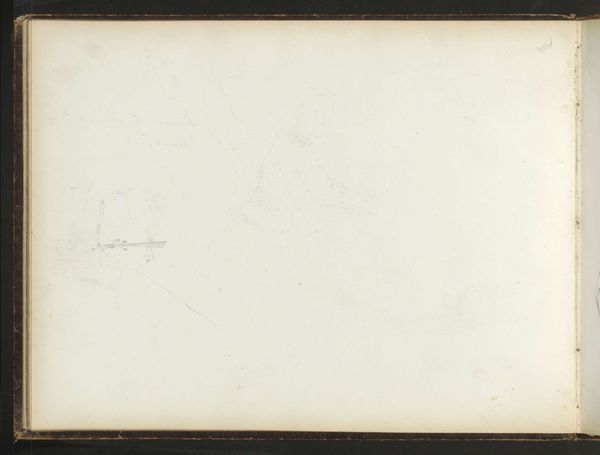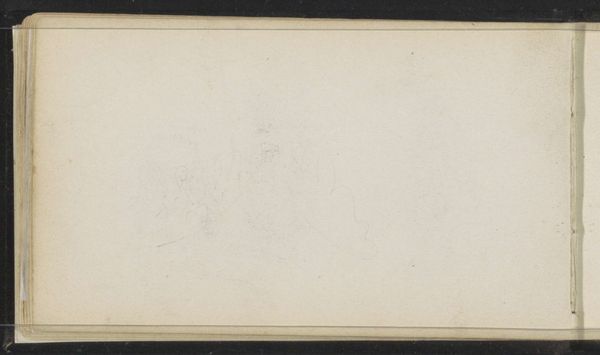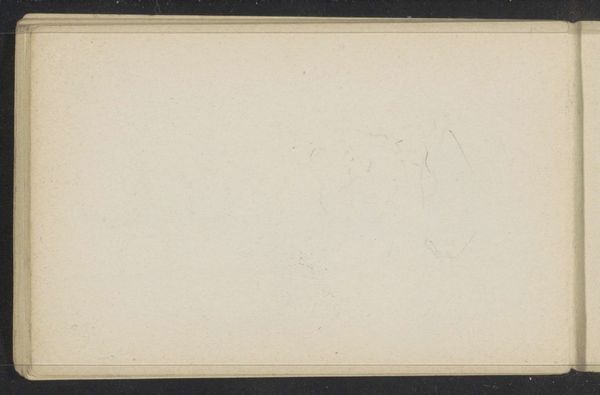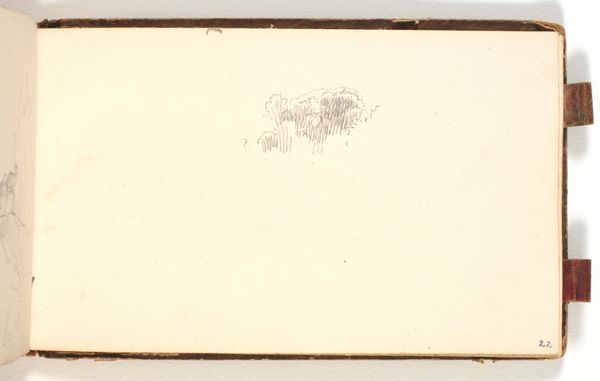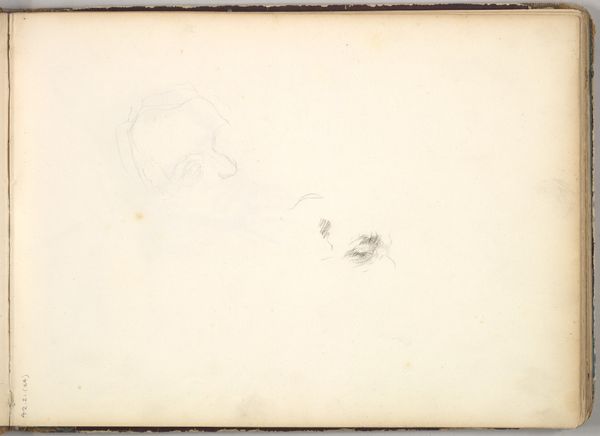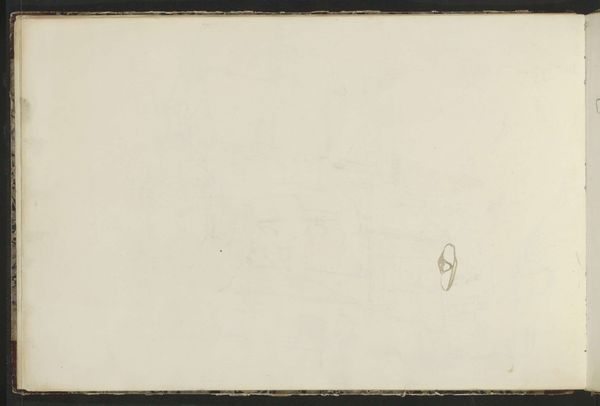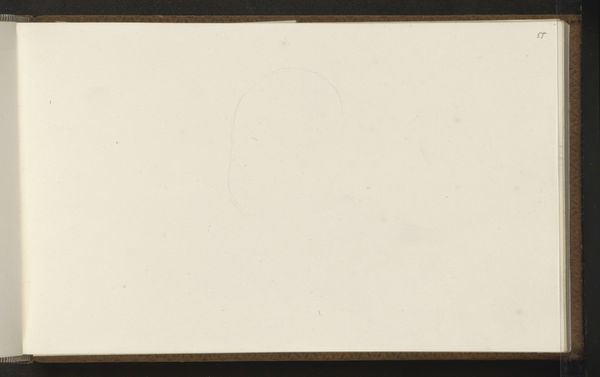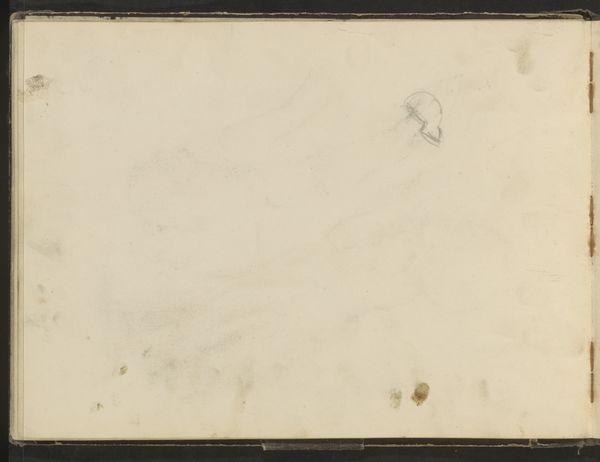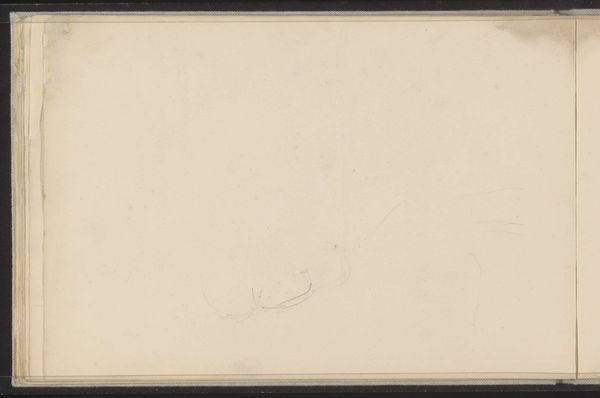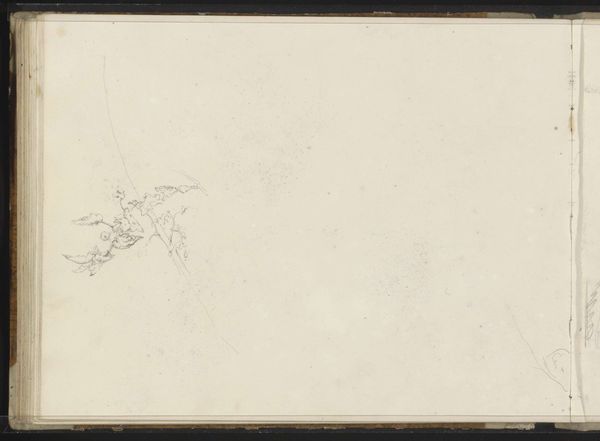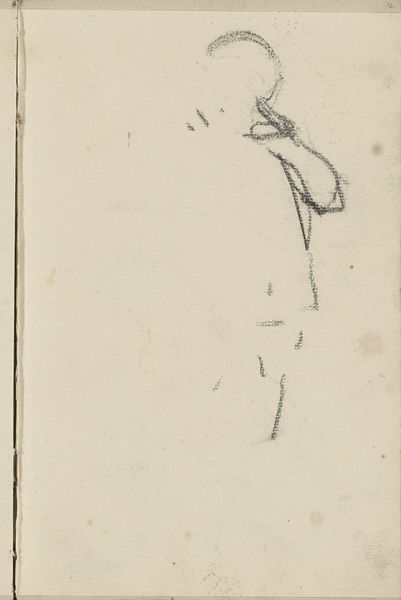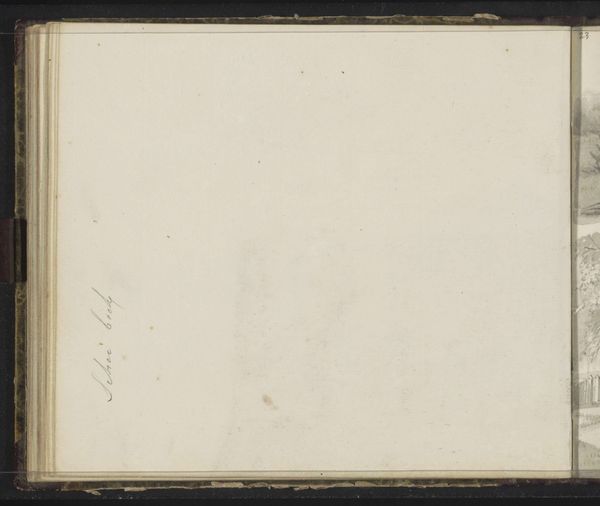
drawing, paper, pencil
#
portrait
#
drawing
#
paper
#
pencil
#
realism
Copyright: Rijks Museum: Open Domain
Editor: So, here we have Reinier Craeyvanger's "Man with a hat on his head", a pencil drawing on paper from the 19th century. It feels very simple, almost like a fleeting thought captured on paper. What's your interpretation of it? Curator: The drawing invites us to consider the politics of representation and visibility. This is a work by a white, European male depicting, ostensibly, another man within that social context. We must ask: Whose image gets circulated? Whose stories are told and how? How might identity or class have shaped what’s captured here and, just as importantly, what's left out? Editor: That's a very interesting take! I was more focused on the artist’s style but now that you point out, it raises questions about what the subject represents and who he might be. What does that hat symbolize, or the fact that he chose to depict him in profile? Curator: Indeed. The hat might signify status or profession – we’d need to do further research. And the profile view? Does it aim for objectivity or perhaps create a distance, even objectification? What would change if we saw the subject’s full face, his direct gaze? Consider too the medium, a pencil sketch. Does that indicate it’s preliminary, a casual study? And what’s the implication? Editor: That hadn't occurred to me, I just saw a quick sketch. Is there some kind of history in this specific type of portraiture? Curator: Think about the tradition of portraiture serving power, the construction of identities, particularly of the elite. Now, how might that inform our reading of this more modest work? Is it a subversion, an affirmation, or simply an unconscious reiteration of existing social structures? Editor: So, even what appears to be a simple sketch can open a whole dialogue about society, identity and representation… I'll definitely be looking at art differently from now on. Thanks! Curator: Precisely! It's about continually questioning whose voices we hear and whose remain silenced within the artistic canon. Always examine how these portrayals can subtly reflect and perpetuate existing power structures.
Comments
No comments
Be the first to comment and join the conversation on the ultimate creative platform.
